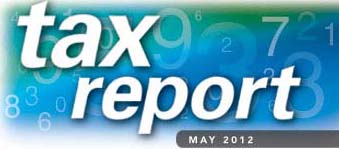A Different Way To Give Donor-Advised Funds

Are you looking for a different way to give to your favorite charities? If you are, you may want to consider a donor-' advised fund.
Donor-advised funds are a popular option because they offer. several attractive benefits: relatively modest contribution guidelines, little to no set-up costs, few ongoing responsibilities, name recognition if desired, and the ability to consolidate contributions and thereby make a greater impact on chosen causes. In 2010, assets in donor-advised funds totaled nearly $30 billion, more than a
12% increase from 2009-
Fund Basics
With a donor-advised fund, you make a contribution (or series of contributions) to the fund and recommend how you would like your gifts to be disbursed. Generally, the donor's recommendations will be followed, but the sponsoring organization has the final say as to how the money is actually distributed.
Tax Benefits

As the donor, you can potentially take advantage of these tax breaks:
• An immediate deduction that reduces your federal taxable income (subject to certain tax law limitations)
• Avoidance of capital gains taxes on appreciated assets you donate directly to the fund
Do Your Research
If you' are interested in setting up a donor-advised fund, do your homework. Ask the sponsoring organization what types of assets it will accept. Funds also
may have minimum contribution requirements to establish a named fund. Make sure you understand what restrictions apply to grants, what fees are involved, and what services are offered to help donors. And find out whether the fund will continue in perpetuity or end when you die.*
Active or Passive
For many years, tile tax law has included provisions that restrict taxpayer deductions for losses incurred in "passive" activities. Passive activities include business activities in which an individual taxpayer does not materially participate. There are two basic ways a taxpayer can meet tile material participation standard:
- Participate all a regular, continuous, and substantial basis (a facts-and-circumstance test)
- Participate for more than 500 hours during the year-
Investment-related activities. such as monitoring finances. do not count as participation unless a taxpayer is directly involved in an activity's day-today management.
In a recent case, the IRS asserted that the owners of a cattle ranch (a married couple) couldn't deduct two years of ranching losses because their involvement with the ranch was a passive activity. Tile owners contended tile ranching activity wasn't passive because they spent aver 500 hours annually participating in ranch · related activities.
In the end, the court ruled against the owners and said their losses weren't deducible. The taxpayers came up short because they didn't have the records they needed - extensive files, to-do lists, phone records, they needed - to show they were actively involved in the ranch's management and clay-tn-day activities.
• There are also other ways to show material participation
*"Donor-Advised Fund Grants Inch Up in 2010,"
The Chronicle of Philanthropy, December 20, 2011
TRA ©2012 by NPI
May 2012 Page 4


